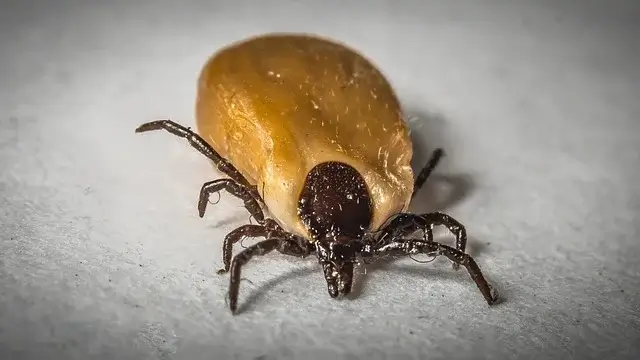Now that winter is settling in, everyone is probably wondering if ticks are still a threat. Are they going to go away until next spring? Can we relax now that the colder weather is here? In this blog post, we’ll explore whether or not ticks survive in winter and offer tips on protecting your pets from these pesky critters. Read on to learn more!
Ticks In Winter – Do They Die Off?
As the weather gets colder, you’d think ticks would go into hibernation or die off. Unfortunately, that’s not the case. Although they are less active in winter, ticks can survive the cold months by going into what’s called “torpor.”
In torpor, ticks enter a dormant state where their metabolism slows down, and they don’t move around much. They can stay in this state for long periods, even months. So if there are any ticks on your property at all or wherever you take your dog or cat on walks, there’s a good chance they’re just waiting for the right moment to come out and bite your furbaby. The best way to protect your pet from ticks is to take preventative measures year-round.
How do Ticks Survive in Winter?
Ticks are tiny arachnids that feed on the blood of animals, including humans. While they are most active in the spring and summer, during cold winter temperatures they continue to seek out hosts. They look for places to overwinter, such as cracks in buildings or under the bark of trees. Once they find a suitable spot, they enter a state of dormancy known as quiescence. Ticks can remain in this state for several months, waiting for warmer weather before reaching their typical level of activity again. While quiescent ticks are not feeding on animals or reproducing, they can still transmit diseases. As a result, it is vital to take precautions against ticks year-round. Ticks can transmit diseases even when they are not actively feeding on animals or reproducing.
Ticks Can Be Extremely Dangerous!
Ticks are parasites that feed on the blood of their host, and they can carry dangerous diseases like Lyme disease, Rocky Mountain spotted fever, and ehrlichiosis. These diseases can cause serious health problems for your pet, including fever, lethargy, joint pain, and even death. The best way to protect your pet is to keep them away from areas where ticks are commonly found, such as tall grasses or woods. You should also regularly check your pet for ticks and remove them immediately if you find any. PawPurity urges you to try using a natural flea treatment before one with chemicals and pesticides, as they can cause their own set of problems.
How To Prevent Tick Bites During the Cold Season
Here are a few tips to help prevent tick bites on your pet:
- Inspect your pet for ticks daily, especially if they’ve been in areas known to have fleas and ticks such as wooded or grassy areas. Look for small, dark spots on their skin.
- Use a tick preventive treatment year-round, even in winter. Many different products are available, so talk to your veterinarian about which is right for your pet. If you want to avoid chemicals and pesticides, PawPurity Flea & Tick Shampoo and Spray Kit is a good option. While the spray reads for dogs only, it also may be used on cats for occasional walks.
- Keep your yard clean and free of debris where ticks can hide.
- Talk to your veterinarian about tick prevention products, such as topical treatments or collar-impregnated insecticides. However, as a pet owner, I believe in the power of natural tick repellents.
What Do Ticks Look Like In Winter? How Do You Identify Them?
When you think of ticks, you might picture them crawling on warm summer days. But they can be active even when the temperature is below freezing. So, what do ticks look like in winter, and how can you identify them?
Ticks are small, dark brown or black insects that feed on the blood of animals and humans. Because they carry such dangerous diseases, some of which can be fatal, it’s important to prevent any ticks from attaching to your pet’s body. Year-round protection is key.
Thanks for reading. Let’s keep our four-legged babies safe!
Here is a link if you want to check out the ingredients, benefits and reviews of our just launched PawPurity Flea & Tick Shampoo & Spray Repellent Kit.











